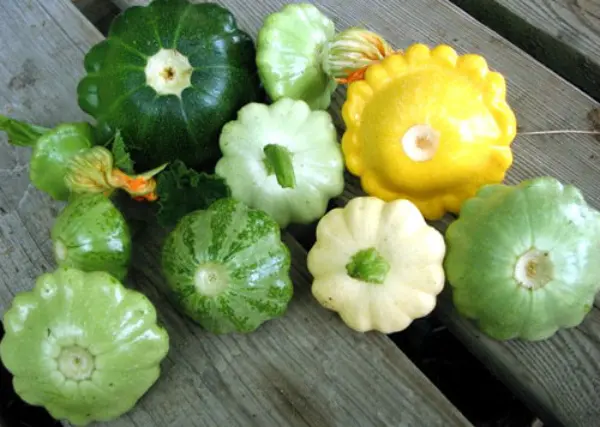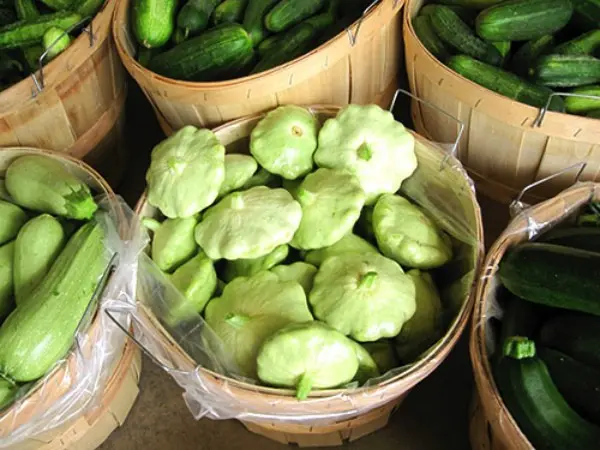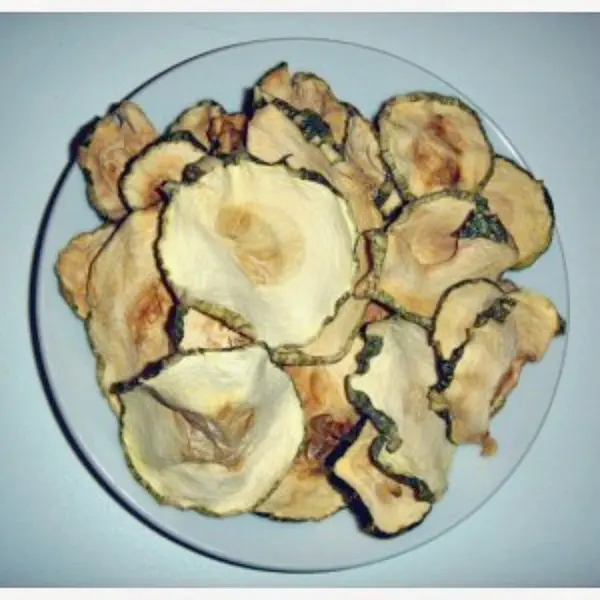Contents


Autumn is the time for harvesting and processing crops from gardens. The more vegetables, fruits and berries that can be preserved or frozen, the more joy there will be in the long winter. After all, it is always nice to taste delicious fruits grown with your own hands. The topic of this article is the storage of squash, the features of processing fruits at home, as well as tricks that will help keep vegetables fresh for as long as necessary.
Features of cleaning patissons
Depending on the purpose for which you need squash – for long-term storage or immediate use, the collection time varies. After all, you can eat ovaries, only formed fruits or not yet ripened. They, by the way, can be marinated. But larger fruits, when they reach 8-10 centimeters in diameter, are usually stuffed, stewed, added to pies, in general, cooked according to all possible recipes.

Harvest several times a week, cut along with the stem. This allows the plant to bear fruit much longer, until winter.
The main thing is not to let the fruits overripe, since it is unprofitable to use or store them in this form. The fact is that in overripe squash, seeds are formed and ripen, and the flesh becomes loose and tasteless.
Before the first frost, which portends the imminent arrival of winter, it is necessary to collect all the fruits, and send the tops and leaves to the compost pit.
Fruits with a strong, shiny skin, the stalk of which is well preserved, are best stored. Size the fruits so that they are at least 6 centimeters in diameter, but no larger than 15 centimeters. It all depends on taste preferences, because small fruits have a more delicate peel, they have fewer seeds and many more nutrients and nutrients. Whereas in large, ripened fruits there are more seeds, but the taste is not very pronounced, and the peel is thicker.

It is important that the pumpkins do not have damage (mechanical or from insects), bruises and rot. Make sure that the plant from which the crop is harvested for the winter is not affected by a fungus or some kind of infection.
Ways of storage
At home, patissons can be stored in a fresh form acceptable for consumption from 3 to 6 months. A canned vegetable can be stored for much longer, but its use in cooking is noticeably reduced.
Usually, unripe fruits are chosen for short-term storage because of their delicate skin and pleasant taste. For long-term storage, they prefer to choose ripe (but not overripe!) Fruits with a stalk. Before laying in storage, they are dried in the fresh air in the shade.
To keep patissons fresh for 7-20 days, you need to put them in a cool place where the air temperature does not rise above 6 degrees.
If you do not have a cellar, then you need to wrap the fruits in bags with holes, put them in enamelware and refrigerate. Vegetables with a dense skin, without damage, can be stored in this way until the middle of winter.

Freezing
One effective way to keep fruits fresh is to freeze them. Take small pumpkins 8-10 centimeters in diameter. Before freezing, you need to rinse them thoroughly in cold water, dry them (you can wipe them with paper towels), and then pack them in a plastic bag. The bags are hermetically sealed and sent to the freezer.
Another way to freeze is to cut the squash into pieces or grate. Of course, you must first wash the fruits. Divided into pieces or grated fruits are laid out in bags or hermetically sealed plastic containers, then sent to the freezer.
This method of storage allows you to maintain taste and useful qualities in fruits for up to 10 months.

Dried squash
Properly preparing patissons for storage for the winter is quite easy – you can dry them. Vegetables are dried in the sun for 3-4 days, then washed in cold water and cut into thin slices. After they are laid out on a baking sheet, so that they overlap each other. Then you can dry them in the open sun or use the oven. As soon as one side is dry, they are turned over and the procedure is repeated. So they are dried for 8 hours, that is, 4 hours of drying on each side. In the oven, it takes 4-6 hours with the door open at 50 degrees.
Pickling
Long-term storage is possible by pickling squash. This will allow them to survive not only one winter, but several years. To do this, you need to properly prepare the marinade by mixing 1 grams of sugar and salt, 50 teaspoon of vinegar, 1 teaspoon of black pepper, 1-2 cloves, 3 bay leaf in 1 liter of water. In addition, you will need 3 cloves of garlic and 450 grams of squash, sweet peppers, currant leaves.
All vegetables are thoroughly washed in cold water, and then cut into cubes. The jars are sterilized and then filled with spices and squash. After the jars are filled with ingredients, they are poured with boiling water and covered with lids for 7-10 minutes. The liquid is then drained and replaced with hot marinade and vinegar. The lids are twisted, and the jars are turned upside down and wrapped.

Salted squash
Salting squash is another way of long-term storage. In addition to the main component, you will need: bell pepper, allspice, bay leaf, dill, vinegar, water and salt.
Vegetables are washed and cut into cubes, and then laid out in layers in sterilized jars, sprinkled with spices. The cooled brine is poured over the vegetables, and then the jars are rolled up.
Pickled squash
Squash sourdough is a traditional way of storing these vegetables. You will need 1 liter of water, 60 grams of salt, 50 grams of sugar, celery, carrots, parsnips, onions, butter and, in fact, squash. Peppers, onions, carrots, parsnips and celery are washed, cut into pieces and fried over high heat. Pumpkins are also washed, and then cut and seeds are extracted from them. Fried vegetables are placed in squash, then carefully placed in sterilized jars, which are subsequently poured with a barely warm solution and closed with lids. Banks are wiped dry and placed in a cool place.
Video “Long-stored squash”
From this video you will learn which variety of dish squash can be kept fresh until spring, as well as what conditions will be needed for this.









